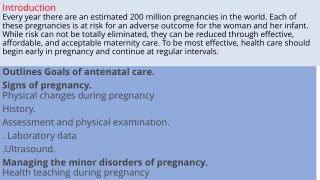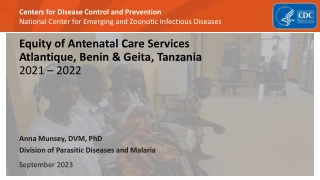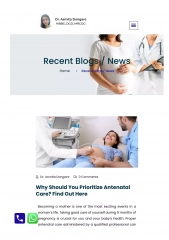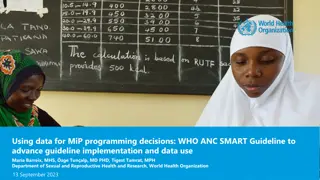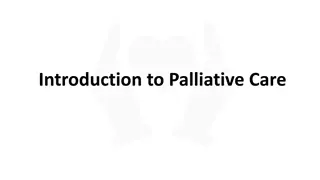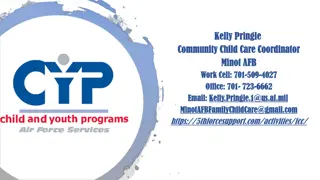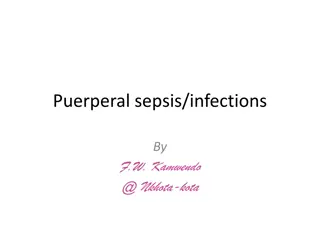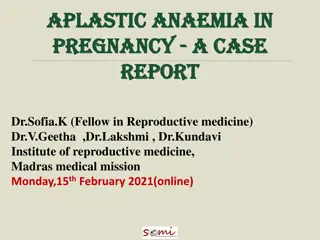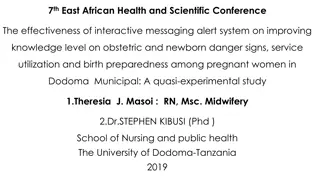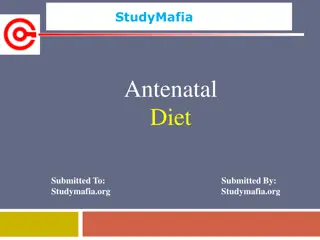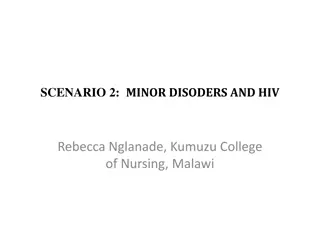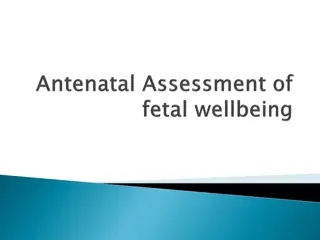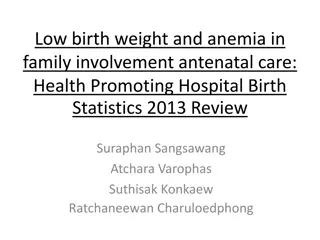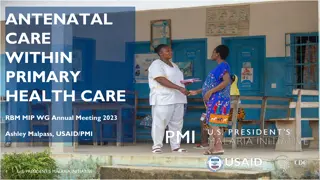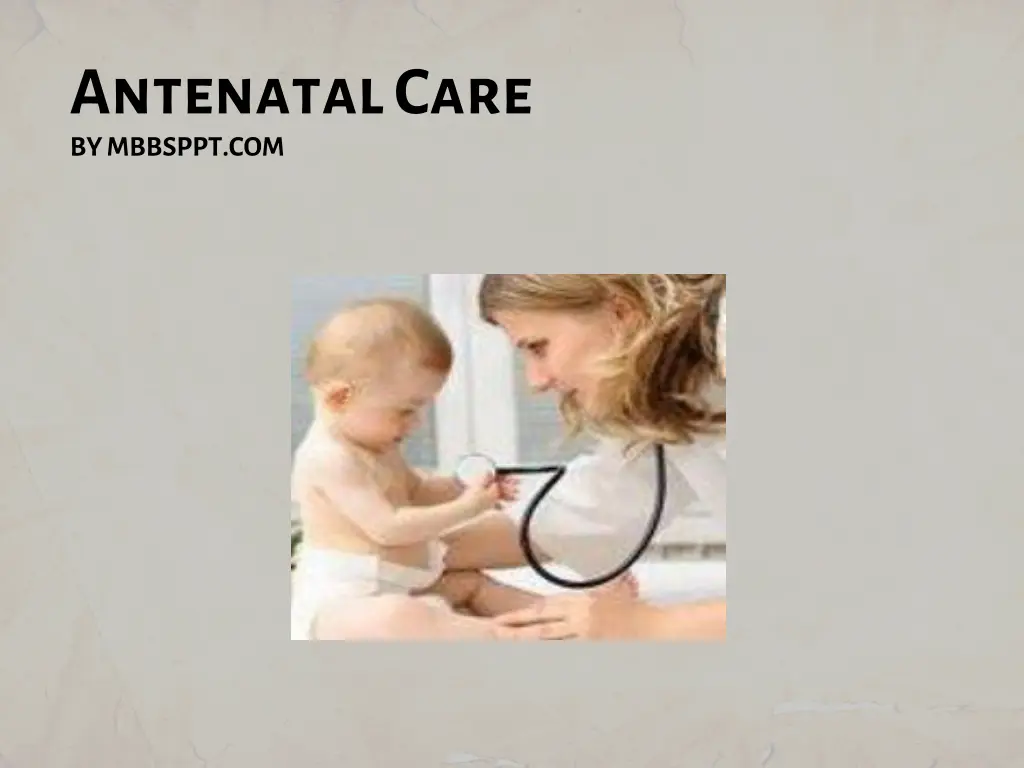
Optimizing Antenatal Care for Healthy Mothers and Babies
"Learn about the importance of antenatal care in ensuring the health of mothers and babies during pregnancy. Explore the objectives, frequency of visits, preventive services, and risk assessment strategies for a successful pregnancy journey."
Download Presentation

Please find below an Image/Link to download the presentation.
The content on the website is provided AS IS for your information and personal use only. It may not be sold, licensed, or shared on other websites without obtaining consent from the author. If you encounter any issues during the download, it is possible that the publisher has removed the file from their server.
You are allowed to download the files provided on this website for personal or commercial use, subject to the condition that they are used lawfully. All files are the property of their respective owners.
The content on the website is provided AS IS for your information and personal use only. It may not be sold, licensed, or shared on other websites without obtaining consent from the author.
E N D
Presentation Transcript
Antenatal Care BY MBBSPPT.COM
introduction Obstetrics is largely a preventive medicine. Aim: To ensure that throughout pregnancy and puerperium , the mother will have a good health and that every pregnancy may culminate in a healthy mother and a healthy baby. Community Obstetrics : Combination of obstetrical concerns with concepts of primary health care. Social Obstetrics: It is defined as the study of the interplay of social and environmental factors and human reproduction going back to the preconceptional or even premarital period . The factors are: Age of marriage Child bearing Child spacing Family size fertility patterns Level of education Economic status Customs and beliefs Role of women in society
Antenatal Care Definition : It is the care of women during pregnancy. Aim : To achieve at the end of pregnancy a healthy mother and a healthy baby. It should begin soon after conception and continue throughout pregnancy. Objectives: To promote , protect and maintain the health of the mother during pregnancy To detect high risk cases and give them special attention. To foresee complications and prevent them. To remove anxiety and dread associated with delivery. To reduce maternal and infant mortality and morbidity. To teach the mother elements of child care , nutrition , personal hygiene and environmental sanitation. To sensitize the mother to the need for family planning , including advice to case seeking medical termination of pregnancy To attend the under-fives accompanying the mother
Antenatal visits Ideally, First 7 months ,once a month Next month, twice a month Thereafter , once a week If it is difficult for the mother to attend the ante natal clinic so often, a minimum of 3 visits covering the entire period of pregnancy should be the target as follows: First visit at 20 weeks or as soon as the pregnancy is known 2nd visit at 32 weeks 3rd visit at 36 weeks
preventive services for mother The first visit , irrespective of when it occurs , should include: Health history Physical examination Laboratory examinations: i. complete urine analysis ii. stool examination iii. complete blood count , including Hb estimation iv. serological examination v. blood grouping and Rh determination vi. chest X-ray , if needed vii. Pap test viii. G.C. test( Gonorrhoea test , if needed) On subsequent visits: Physical Examination(eg. Weight gain ,blood pressure) Lab tests should include: o Urine examination
Iron and folic acid supplementation and medication as needed. Immunization against tetanus Group or individual instruction on nutrition, family planning, self care , delivery and parenthood. Home visiting by a female health worker/trained dai Referral services,where necessary. Risk Approach Central aim of antenatal care : To identify high risk cases and provide them skilled care. What are High risk cases? i. Elderly primi ii. Short statured primi iii. Malpresentations iv. Antepartum haemorrhage, threatened abortion v. Pre-eclampsia, eclampsia vi. Anaemia vii. Twins, hydramnios viii. Previous still birth,intrauterine death, manual removal of placenta ix. Elderly grandmultiparas x. Prolonged pregnancy
Maintenance of Records Antenatal Card is prepared at the first examination It contains: a) Registration number b) Identifying data c) Previous health history d) Main health events Record is kept at MCH/FP centre A link is maintained between the Antenatal card, Postnatal card and Under-fives card Home Visits Home visits are necessary . Why? It will win the mother s confidence. Observation of the environmental and social conditions at home. Opportunity to give prenatal advice.
Prenatal advice Pregnancy consumes about 60,000 kcal. Lactation demands about 550 kcal a day. Wt. gain of mother during pregnancy. Maternal iron stores are less. Baby may lack iron stores necessary for rapid growth and increase in blood volume and muscle mass in the 1st year of life. DIET: Personal Cleanliness Rest and sleep:8 hours sleep and 2 hours rest after meals Bowels : Constipation should be avoided Exercise : Light household work Smoking : Should be cut down to minimum.Perinatal mortality among babies whose mothers smoked during pregnancy is 10-40% higher than those of non- smokers. Alcohol:Heavy drinking can cause Fetal Syndrome(FAS) which includes IUGR and developmental delay. Dental care Sexual intercourse: Should be restricted esp. during last trimester. PERSONAL HYGIENE:
DRUGS: Thalidomide-caused phocomelia LSD-causes chromosomal damage Streptomycin-may cause ototoxicity Corticosteroids-may impair fetal growth Certain drugs are excreted in breast milk RADIATION: Most COMMON Abdominal x-RAY Children exposed to intra uterine X-ray Mortality rates from leukaemia and other neoplasms were higher WARNING SIGNS:The Mother should report immediately in case of: Swelling of the feet Blurring of vision Fits Headache Bleeding or discharge per vagina Any other unusual complaint CHILD CARE:The art of child care needs to be learnt
Symbol of under 5 clinics Care in illness Family planning Growth monitoring Preventive care
Aims and objectives Diagnosis and treatment of acute illness , chronic illness and disorders of growth and development X-ray and laboratory services Referral services Care in illness Immunization Nutritional surveillance o sub clinical nutrition o food supplementation Health check-ups : every 3-6 months Oral rehydration solution for diarrhea (a child gets 2-6 attacks in a year) Family planning Health education Preventive Care
Growth Monitoring - on growth chart also called Road to health card Every month up to 1 year 2 monthly-up to 2 years 3 monthly-up to 5 years The weight of child is plotted according to age

